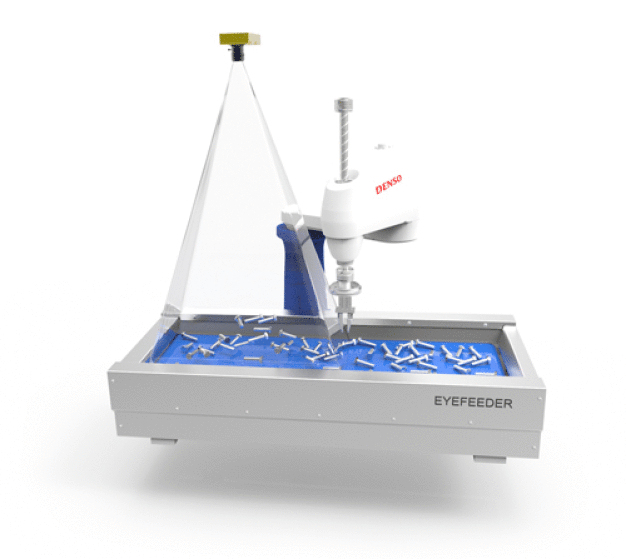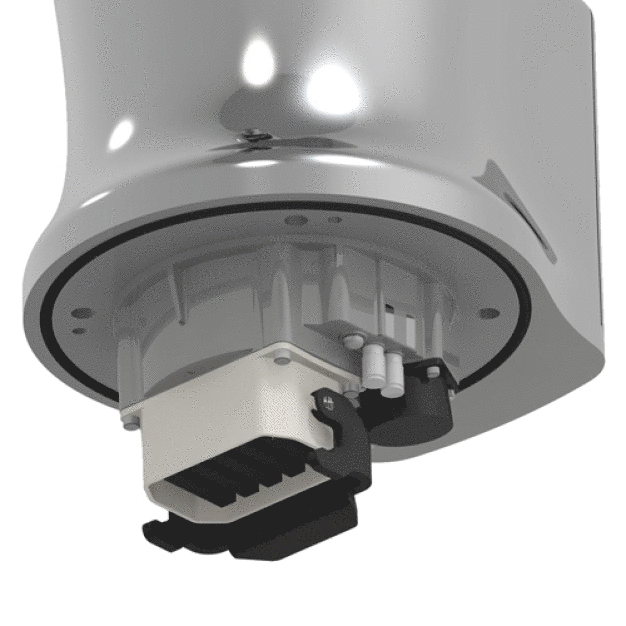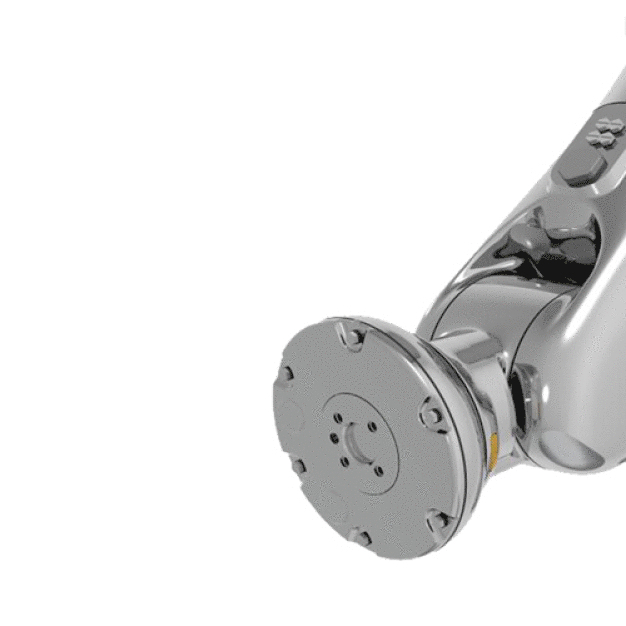Special Surface Protects New DENSO Robot from Bacteria Contamination
DENSO Robotics presented the new VS H2O2/UV 6-axis robot at the Motek 2014 / Round forms, the absence of external visible screws and a washable and
resistant surface make the robot the first choice for medical, pharmaceutical, electronics and food industries.
The new robot VS H2O2/UV was in the centre of the presentation of DENSO robotics, worldwide market leader for compact robots, at the Motek 2014 in Stuttgart, Germany. The state-of-the-art robot offers a special surface that is resistant against sterilization methods with H2O2 and UV light. The robot includes a completely internal wiring that goes up to the robot’s 6th axis. It also features an innovative design with soft and round forms, so no residue and dirt can accumulate on the robot. The VS H2O2/UV is the perfect solution for the medical, pharmaceutical, electronics and food industries, which all require high standards of hygiene and sterility. DENSO Robotics presented the new robot in hall 7 at booth 7108 at the Stuttgart trade fair from 6-9 October 2014. In addition, DENSO showcased the EYEFEEDER®, a feeding system consisting of a camera and a robot operated via a RC8 controller. This application illustrates the flexible interaction of controller, robot, and peripheral devices and demonstrates how easy it is to integrate robots into a production line.
“The VS H2O2/UV is ideal for customers with applications such as sorting, portioning, processing and packing”, Jürgen Küch, Senior Manager Europe at DENSO Robotics, explained. “The number of pre-orders for the robots demonstrates that our customers from the pharmaceutical, medical and food industries have great confidence in our products and services. They have literally been waiting for DENSO launching a robot like the VS H2O2/UV.” Clean room environments are allowed only to contain a minimum of dust, suspended particulates, and chemical vapours. Companies in these industries have to operate based on strict regulations about hygiene and sterility. Companies often use hydrogen peroxide H2O2 and ultraviolet light to kill germs and bacteria. “Not every robot is suitable for such demanding working environment”, Küch pointed out.
Growing demand for robots suitable for sterile environments
The robot is equipped with a shiny aluminium surface that ensures easy cleaning and makes it easy to spot dirt particles. The round design hinders the accumulation of bacteria in hard-to-reach or square surfaces. The absence of visible screws limits the settling of bacteria and dirt as well. Like the new VS Series, this robot features a complete internal wiring up to the end of the robot’s arm (6th axis). This enables to connect grippers and other devices directly to the robot’s flange using a so called “communication flange”. This prevents tangling the wires with surrounding equipment or damaging them while cleaning the robot with strong chemicals. Connecting the robot at the bottom allows all cables to be sealed inside and keeps all bacteria out. Special optional features of the robot are also an external battery unit for the robot’s motor encoders that can be placed outside the clean room environment, therefore preventing contamination, as well as the option of an external brake release unit for the robot’s axes.
EYEFEEDER® regulates material input
The feeding system, EYEFEEDER®, was another highlight at the stand of DENSO Robotics. This solution consists of a part feeder, a camera system and a DENSO robot. The whole system is operated and controlled by the RC8 controller. The system works in the following way: Material is delivered by a bulk-material carrier. As soon as the products are put on the conveyor, they are moved towards the vision-system’s recognition area. The vision system then decides the steps to follow: if the products are well positioned and ready for collection, it transmits the coordinates to the robot’s controller, so that the robot can grab the products. If
the number of products is sufficient but they are out of place, the camera system reports that the products have to be tossed or turned in order for the robot to collect them. If there are enough products remaining, the camera system reports that new products have to be shifted into the vision-system’s recognition area. The motors of the part feeder are powered directly by the RC8, which means no further console terminal is necessary.
“The EYEFEEDER® can be combined with different 4- and 6-axis DENSO robots, depending whether pick and place or assembly operations are necessary. This again underlines the flexibility of our products“, Küch said. The conveyor’s speed and joggling intensity are determined by the RC8 controller, which is connected to the EYEFEEDER® via an Ethernet connection to the ORiN Network. The RC8 is the smallest industrial robot control in the 3-kW-class. Altogether, the EYEFEEDER® is able to move parts of up to 250 mm and a maximum weight of up to 300g.
DENSO Robotics Europe
64546 Mörfelden-Walldorf
Germany











